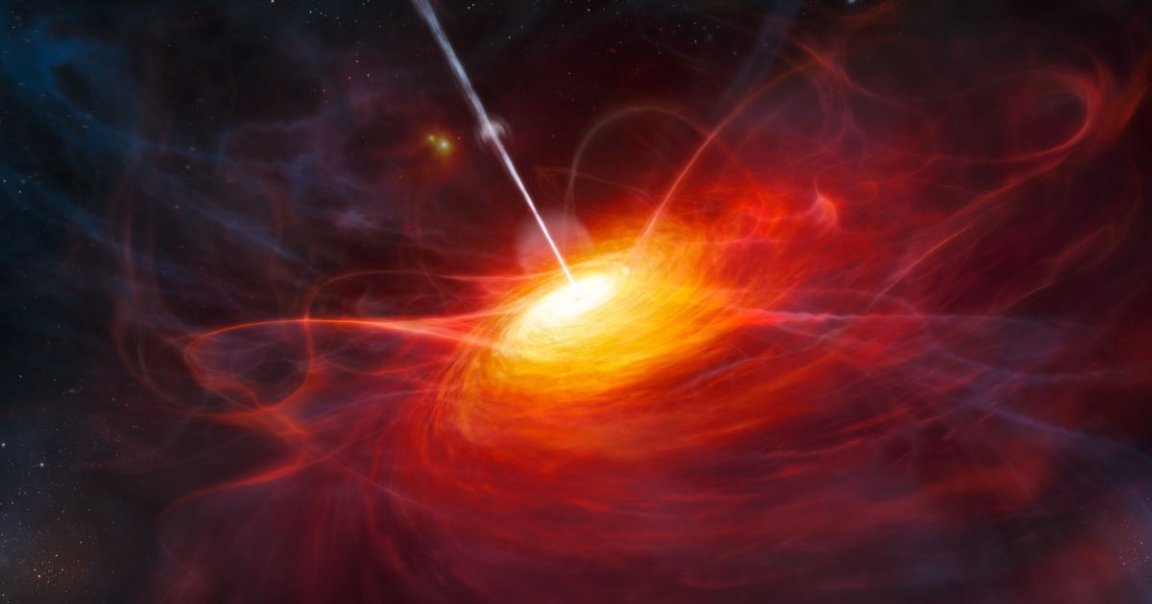
Demolition Derby
For the first time, astronomers have observed a whole new mechanism by which stars can die — by smashing into each other in an extremely turbulent environment.
A new study published in the journal Nature Astronomy details how astronomers have finally seen evidence of a long-hypothesized type of stellar death that could be described as a “demolition derby,” according to a press release.
The researchers were looking for the source of a powerful gamma-ray burst (GRB) when they realized something was amiss.
While most GRBs, explosive outbursts of energy, occur when massive stars merge or explode in a supernova, the newly identified GRB dubbed 191019A seems to have come from the collision of neutron stars or stellar remnants — inside the chaotic environment of a supermassive black hole that sits at the center of an ancient galaxy.
The conclusion could allow us to glean insights into the evolution of stars and the many unexpected ways they meet their spectacular demise.
“Most stars in the universe die in a predictable way, which is just based on their mass,” Radboud University astronomer and lead author Andrew Levan told Reuters. “This research shows a new route to stellar destruction.”
Born to Be Wild
This new pathway to star death is significantly more explosive than the other already known ones.
“Our results show that stars can meet their demise in some of the densest regions of the universe, where they can be driven to collide,” said Levan in a statement.
The research could also shed light on some of the observations we make back on the surface.
“This is exciting for understanding how stars die and for answering other questions, such as what unexpected sources might create gravitational waves that we could detect on Earth,” Levant added.
Observed by the National Science Foundation’s Gemini South telescope in Chile, the discovery “confounds almost every expectation we have,” explained coauthor and Northwestern astronomy doctoral candidate Anya Nugent, a specialist in gamma-ray bursts, in the statement.
“For every hundred events that fit into the traditional classification scheme of gamma-ray bursts, there is at least one oddball that throws us for a loop,” Northwestern astrophysicist and study coauthor Wen-fai Fong added. “However, it is these oddballs that tell us the most about the spectacular diversity of explosions that the universe is capable of.”
More on GRBs: Gamma Ray Burst Was So Bright It Blinded Almost All Equipment to Detect It